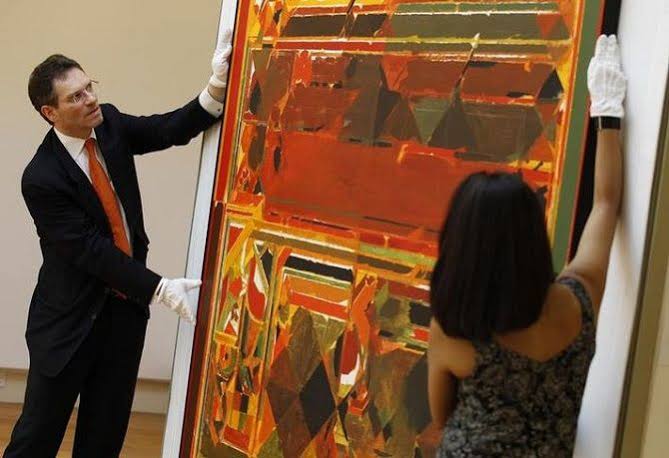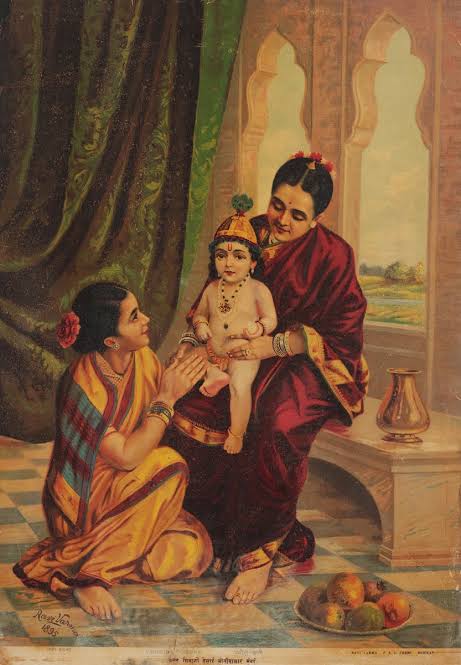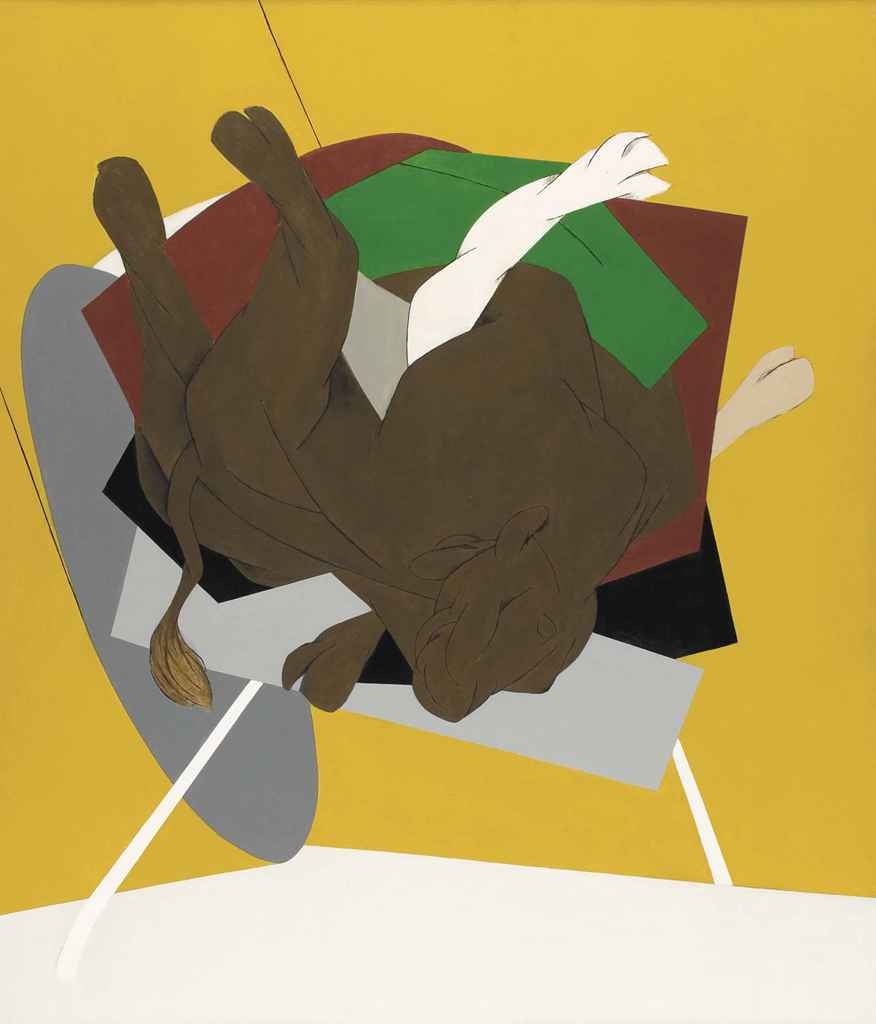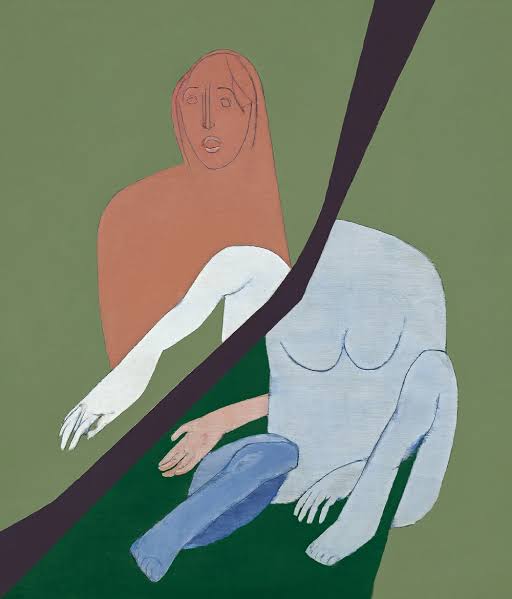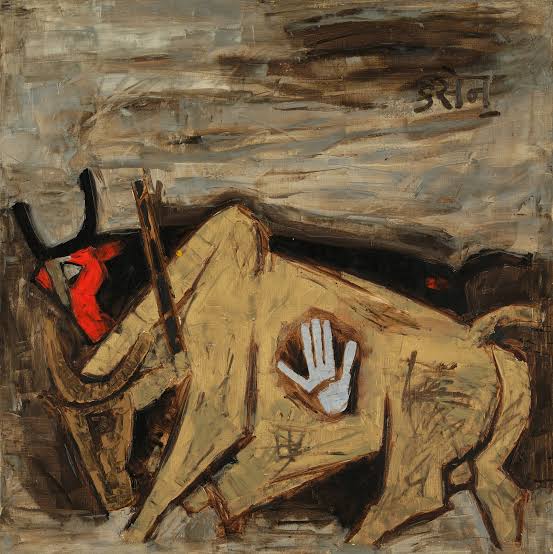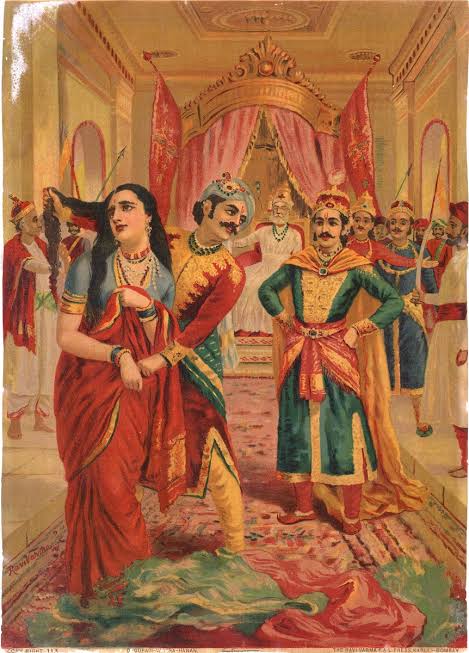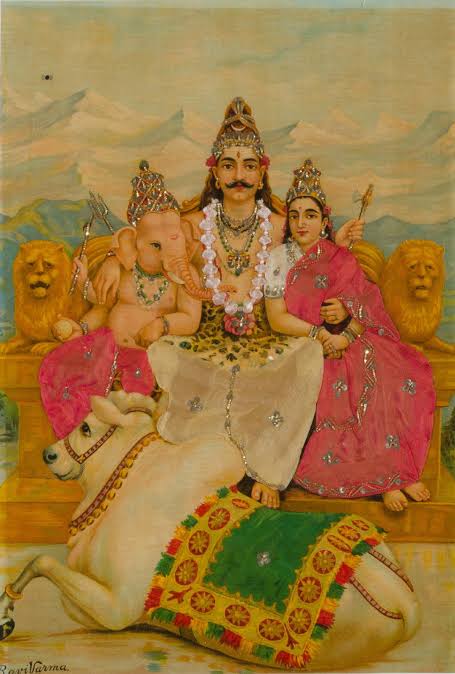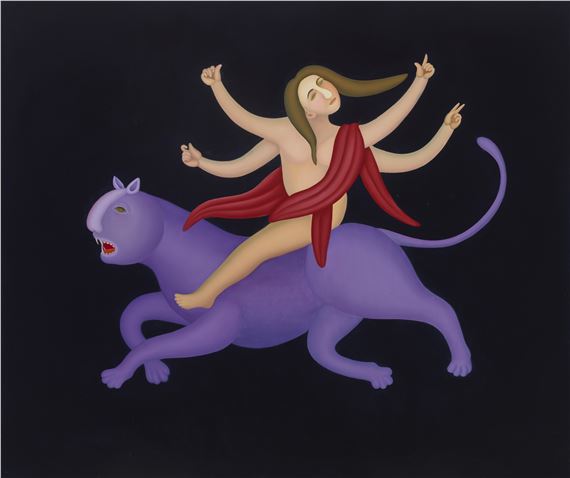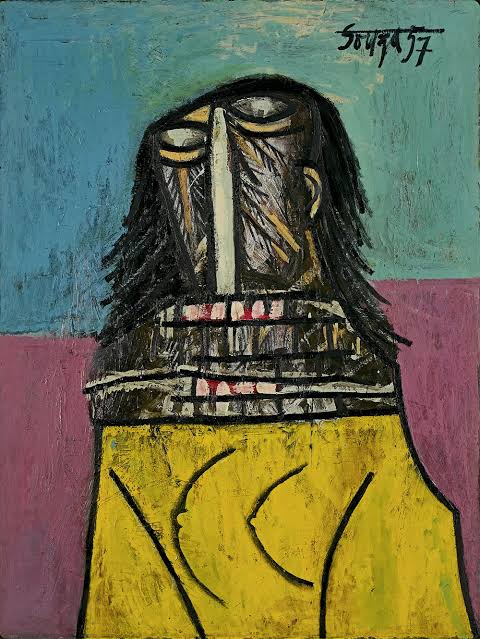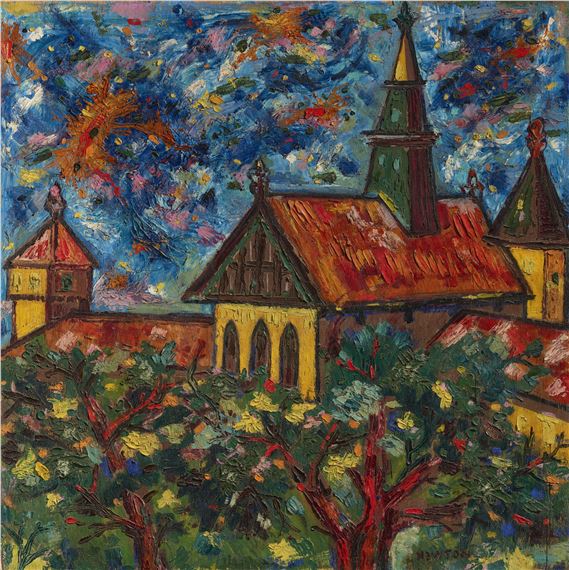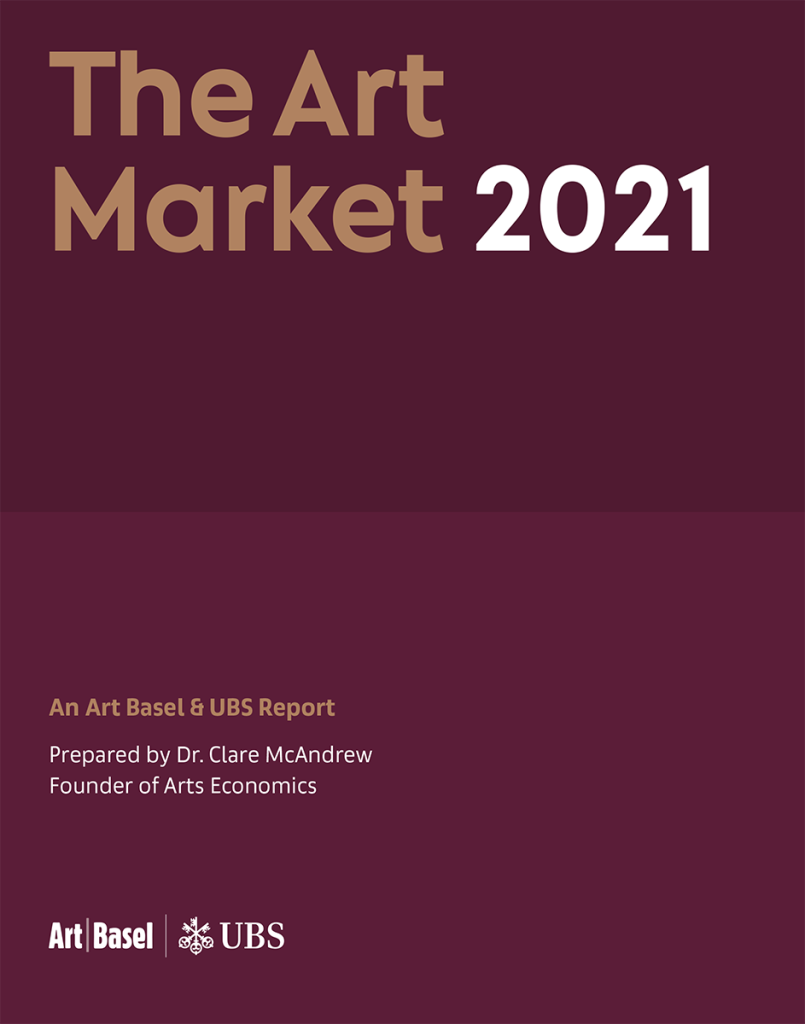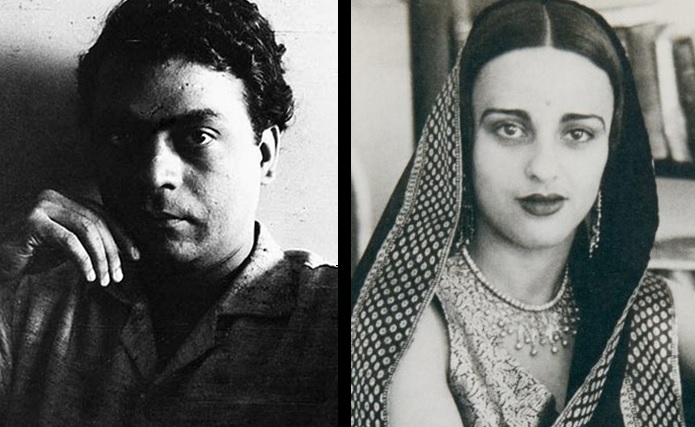In what many would consider an unstable and unpredictable year for the economy, 2022-23 boasted some of the most expensive paintings sold in history. After 2020’s lockdown-era auction depression, the market has since regained its pre-pandemic luster, and in many ways, rocketed into an entirely new stratum of opulence.
While each work sold has merit in itself, these are the Top 10 most expensive works sold at auction between April 2022 to March 2023.
(This article is part of the Indian Art Market Report FY 2022-23. Download the full report here)
1) V.S. GAITONDE
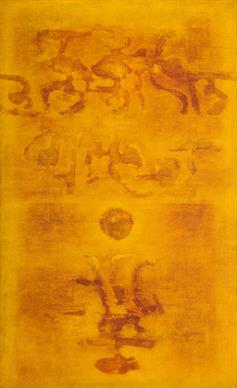
Untitled, 1980
Oil on Canvas
Rs. 47.5 Cr.
The painter’s image in the media was that of a recluse, a man who kept to himself and whose work was influenced by Zen Buddhism. Once he told an interviewer, “Everything starts from silence. The silence of the brush. The silence of the canvas. The silence of the painting knife.” In 1947 he joined the Progressive Artists’ Group(PAG) and to date is hailed as one of the most progressive Indian painters who took a bold step by choosing abstract art form, a road less travelled.
2) RAJA RAVI VARMA
Yashoda Krishna
Oil on canvas
Rs. 43.7 Cr
He was the first Indian artist to cast the Indian gods and mythological characters in natural earthy surroundings using a European realism. He was also the first painter of Indian origin to make lithographs of his paintings affordable and easily accessible, bringing fine arts to the masses. His style of painting is featured heavily and also shaped Indian ‘calendar art’. The fame of his artistry reached far and wide and his birthplace (the small town of Kilimanoor) had to open a post-office to receive letters and requests for paintings that came for Varma from all across the country. In 1873, Ravi Varma won the first prize at the Madras painting exhibition and achieved worldwide acclaim after he won an award for an exhibition of his paintings at Vienna in 1873.
3) TYEB MEHTA
Untitled, 1999
Acrylic on canvas
Rs. 42 Cr
A slow and meticulous painter, Tyeb Mehta was a ruthless self-editor who destroyed many more paintings than he ever let out of his studio. He grew up in an orthodox Shiite Muslim community in Mumbai. His family was in the movie business and he took to film editing and continued making films long after he became a painter. He also won the Filmfare Critics Award for his 1970 documentary ‘Koodal’, which was shot in a slaughterhouse. Most of his works show reflections of his childhood recollection of violence in post-independent India.
4) TYEB MEHTA
Diagonol, 1973
Oil on Canvas
Rs. 25.3 Cr
In “Diagonal,” Mehta explores his signature theme of the human figure in a fragmented and distorted manner. The artwork features fragmented and angular figures, emphasizing a sense of tension and movement. Mehta’s use of bold colors and dynamic composition adds to the overall impact of the painting.
Tyeb Mehta was known for his ability to convey emotion and the existential struggles of human existence through his art. His works often depict the pain, anguish, and alienation experienced by individuals, capturing the complexities of human life.
“Diagonal” reflects Mehta’s exploration of form, composition, and the human condition, which are prevalent in much of his artwork.
5) M.F. Husain
Bulls, 1961
Oil on Canvas
Rs 23 Cr
M.F. Husain, also known as Maqbool Fida Husain, was a renowned Indian painter and a founding member of the Progressive Artists’ Group in India. “Bulls” is indeed one of his notable artworks created in 1961.
In “Bulls,” Husain captures the energy and power of the bull, a recurring motif in his paintings. The artwork showcases his distinctive style, characterized by bold brushstrokes, vibrant colors, and a sense of movement. Husain often drew inspiration from Indian mythology, folklore, and everyday life, and his works frequently depicted themes related to Indian culture, society, and politics.
6) RAJA RAVI VERMA
Draupadi Vastraharan, Circa 1888-1890
Oil on canvas
Rs 21.6 cr
This is an iconic painting by Raja Ravi Varma titled “Draupadi Vastraharan” or “Draupadi Disrobed.” This painting is indeed one of Raja Ravi Varma’s notable works.
In this painting, Raja Ravi Varma depicts a pivotal moment from the Hindu epic Mahabharata, where the character Draupadi is being disrobed in the royal court. The painting portrays Draupadi’s distress and vulnerability as she is being humiliated. Raja Ravi Varma’s depiction of the scene captures the emotional intensity and dramatic tension of the narrative.
The painting “Draupadi Vastraharan” by Raja Ravi Varma has become an iconic representation of this significant episode from the Mahabharata. It showcases the artist’s ability to capture powerful emotions, intricate details, and his mastery of composition. The painting’s impact extends beyond the art world and has played a role in shaping the popular visual imagination of the story of Draupadi.
7) RAJA RAVI VERMA
Lord Shiva and Family
Oil on Canvas
Rs. 18.4 Cr
This lovely painting of Lord Shiva with his wife Parvati and son Ganesha is one of Raja Ravi Varma’s famous paintings. This painting depicts Shiva in his domesticated form with his family. He is painted wearing royal robes, seated on a gilded throne in between his wife Parvati and son Ganesha. It is one of the unusual depictions of Shiva, in royalty. Nandi, who is Shiva’s mount, is also shown sitting by their feet. Mount Kailash, Shiva’s abode is seen in the background.
8) MANJIT BAWA
Untitled (Durga), 2004
Rs. 16.4 Cr
Manjit Bawa was a prominent Indian painter known for his vibrant and spiritually-inspired artworks. Durga is a revered deity in Hinduism, symbolising feminine power and the triumph of good over evil. Manjit Bawa often drew inspiration from mythology, spirituality, and folk traditions in his paintings. His works were characterized by bold, bright colours, lyrical compositions, and a sense of mysticism.
Bawa’s artistic style and thematic focus suggest that his portrayal of Durga would have been imbued with symbolism, energy, and reverence for the divine. His contributions to the contemporary art scene in India continue to be highly regarded, and his works have been exhibited internationally.
9) F.N. SOUZA
Girl in yellow sweater, 1957
Oil on Board
14.4 Cr
F.N. Souza, also known as Francis Newton Souza, was an eminent Indian artist and a founding member of the Progressive Artists’ Group in India. “Girl in Yellow Sweater” is indeed one of his notable artworks created in 1957.
In this painting, Souza captures the subject of a young girl wearing a yellow sweater. His distinctive style, characterized by bold brushwork and a raw, expressive approach, is evident in this artwork. Souza often explored themes of human emotion, identity, and societal issues in his paintings. His works were known for their intensity and provocative nature, challenging traditional artistic norms.
“Girl in Yellow Sweater” exemplifies Souza’s ability to convey emotion through his bold use of color, strong lines, and distorted figures. It showcases his unique interpretation of the human form and his ability to capture the essence of his subjects.
10) F.N. SOUZA
View from Crawford market, Bombay, 1946
Oil in Panel
Rs. 14.4 Cr
View From Crawford Market was painted when Souza was only twenty two years old and is one of the earliest works by the artist to come to the market. Painted in 1946, this seminal landscape marks a critical, transformative moment in Souza’s life and career, after his first exhibitions at the Bombay Art Society and Chemould Frames, culminating the following year with him co-founding the avant garde Progressive Artists’ Group. This jewel of a painting reveals Souza’s capacity for calm creativity, stepping outside his comfort zone as political rebel and enfant terrible of modern Indian art, to produce what is unquestionably a masterpiece in his oeuvre.
Feature image courtesy: Reddit

Contributor

